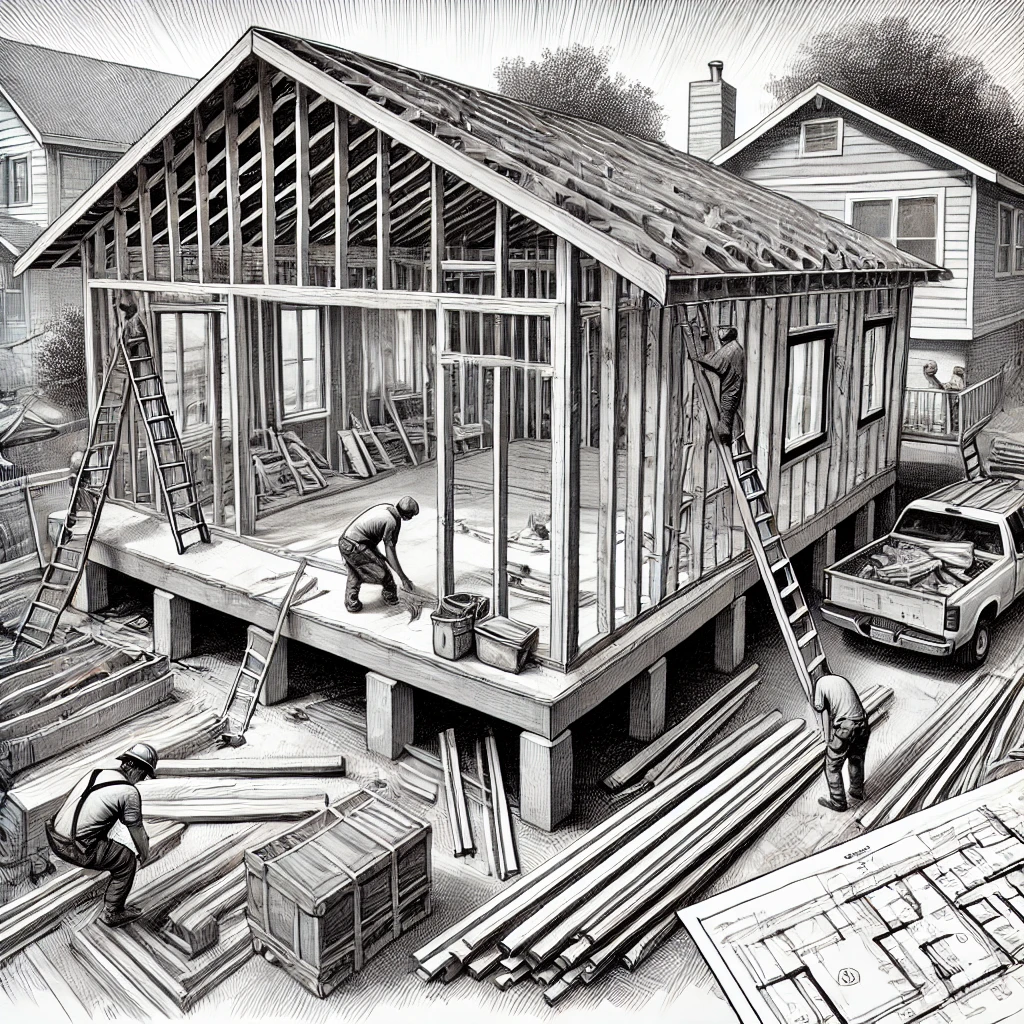Building an ADU involves more than just the structure. Sitework and utilities can come with hidden costs that might catch you off guard.
Given how expensive ADUs can be, it’s important to budget for every ‘hidden’ cost so you have a clear idea of how much the project will cost.
Let’s dive into the 15 hidden costs you need to be aware of to avoid surprises and ensure your project stays within budget.
Permits and Fees
Obtaining necessary permits is essential for legal compliance. These can include building permits, electrical permits, plumbing permits, and possibly environmental permits.
Fees vary by location, and the scope of work, and unexpected additional permits can increase costs.
Always check local regulations to budget accurately.
Site Preparation
Site preparation has a lot of moving parts, from cleaning the land to ensuring good drainage, it can easily be more expensive than you’d expect.
Unforeseen issues like removing buried debris can add to costs. Proper initial assessment is vital to avoid surprise costs.
Utilities
Connecting utilities like water, electricity, and sewer to your ADU can not only cost a lot, but things can also go wrong very quickly leading to even higher costs.
Ensuring all connections meet local codes is essential to avoid future issues, and generic costs are listed below:
- $2,500 to $12,500 for electricity
- $9,000 to $34,500 for electricity, septic, water & gas
Upgrading Existing Utilities
Existing utilities may not support the additional load from an ADU. Upgrading electrical panels, sewer lines, or water mains can be necessary and expensive.
These upgrades ensure safety and efficiency but can add substantial costs, similar to if you were to install the utilities from scratch (shown above). Consult with utility providers early in the planning process.
Soil Testing
Soil testing ensures the ground can support the construction of your ADU.
Poor soil conditions may require additional work, such as soil stabilization or deeper foundations, which can be costly. Identifying these issues early can help plan for the necessary remediation.
Always budget for potential soil improvements, with average prices costing anywhere from $683 to $ 2,155.
Tree Removal
Yep, tree removal is a thing you need to consider, costing a whopping average of $657 per tree.
Tree removal requires permits and professional services as well, so it isn’t something you can get around (and not something you should try to get around, either).
Stump grinding and disposal of tree debris also add to the costs. Proper site evaluation can anticipate these expenses.
Erosion Control
During construction, erosion control measures may be necessary to prevent soil erosion and manage water runoff.
This could involve silt fences, straw wattles, or other methods. These measures ensure environmental compliance and prevent future landscaping issues. Budgeting for erosion control is crucial for project planning.
Landscaping
Post-construction landscaping to restore the site can add to costs, and can range anywhere from a few hundred dollars for basic improvements to tens of thousands of dollars.
This includes replanting grass, shrubs, and other vegetation, as well as potentially installing irrigation systems.
Access Roads
If access roads are needed for site access, this will add to the cost.
This guide is a good starting point for how much this can cost, but it ill vary depending on the size of the road and whether it needs grading.
Stormwater Management
Managing stormwater on the property is crucial to prevent flooding and erosion.
This can include installing retention basins, rain gardens, or other infrastructure to manage water runoff, and the typical price starts from a few thousand dollars.
Proper stormwater management is essential for environmental compliance and property safety.
Inspections and Testing
Multiple inspections and tests are required throughout the construction process to ensure compliance with local building codes and standards.
These can add time and cost to the project but are essential for safety and legal compliance. Scheduling inspections efficiently can help manage costs.
Septic System Installation
If your property isn’t connected to a municipal sewer system, you’ll need to install a septic system.
This can be a significant expense, usually costing anywhere from a few thousand to over $20k in some cases.
Fire Safety Requirements
ADUs must comply with fire safety regulations, which may include installing fire sprinklers, smoke detectors, and ensuring proper egress windows.
These requirements enhance safety but can add to costs, and although they should be included in any early plans, they can throw people off guard if they haven’t budgeted accordingly.
Impact Fees
Some municipalities charge impact fees for new constructions, including ADUs. These fees contribute to the cost of expanding public services like schools, parks, and transportation infrastructure.
Understanding local impact fees early helps in accurate budgeting. Consult with local authorities to determine applicable fees.
Utility Metering
Separate utility meters are not cheap, but they do need to be included for any ADU.
Wrapping It Up
Budgeting can be tedious and seem like a waste of time, but it’s something we’d always recommend when it comes to planning your ADU build.
If you can avoid as many hidden costs as possible, you’re on track to a successful build.
For more detailed information and to navigate the complexities of ADU construction, consult with local experts and thoroughly research all requirements.
You can also read our guide on building an ADU on a budget for some easy tips to implement to save money during the construction process.
